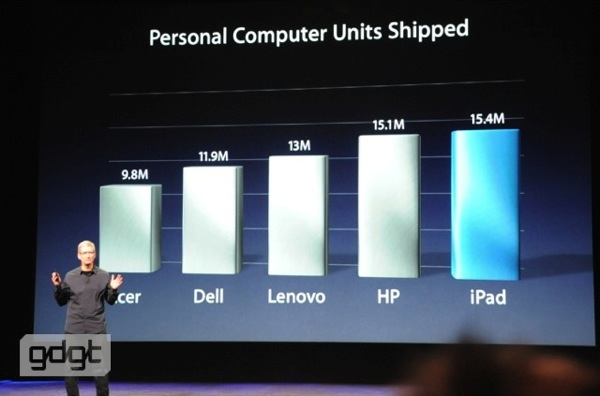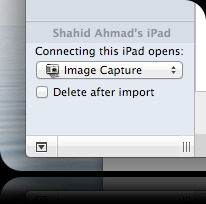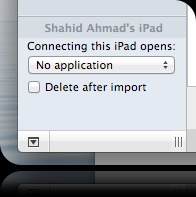I’ve been surprised by John Gruber’s relative restraint in the face of the big reveal of The Holy Grail last week. I’m less surprised over the spate of articles by people who have their heads in the sand about what this new product means and how revolutionary it actually is. Although I was enjoying the nearby GDC during the announcement, I was blessed enough to be able to place my pre-order from the Starbucks on 3rd Street, from my iPad 1, naturally, just before the battery died after an intensive day of recording audio, taking notes and Engadget-page-refreshing.
The pre-existing iPad sales were hardly anaemic.

(This was just from the last reported quarter)
The fact that an unmatched software base (over a quarter of a million apps work on iPad) and a slightly insane 25 billion downloaded apps in total on iOS makes for customers that are not likely to be going anywhere else soon, seems to be lost on these so-called experts who think that hundreds of millions of iOS customers are suddenly going to jump ship to another platform “soon”.
What impressed me the most was that Apple was able to include a much more powerful SOC, a 4G LTE radio, known to drain Android handsets in little more than an hour and 4 times the pixels (can’t wait to read Instapaper) at a far greater colour saturation level on a device that doesn’t drain the battery any faster than its predecessor. That’s an engineering rabbit-out-of-the-hat delivered with insouciance by a confident company on top of its game while it sits on top of the world. Ridiculously impressive, and ridiculed only by the self-evidently ridiculous.
For the developer of iPad apps though, there is now a serious problem that I have never faced in 30 years of software development. It’s simply this: Never before has a target device had a greater resolution than the display used to create the software for it. The worst case has been parity (like when I wrote games for the Atari 400 on the hardware itself). Up until last week, the resolution on most high definition monitors meant that what you saw on your iPhone Retina could at least fit onto your working HD display, even if the dot pitch meant you’d see a grotesquely bloated version of it, but with the new iPad, you won’t even be able to see all of the pixels.
That’s a first.
And if that doesn’t scare the competition, they are already over.
(March 17, 2012 update: Note I said “most” monitors. There are always edge cases. I specifically excluded the wonderful 27″ iMac and the Thunderbolt display, out of the reach of many people, myself included for now. In any case, neither the 27″ iMac display, nor the Thunderbolt display and other such devices can come close to the pixel density of the amazing new iPad. The display on this new device is entrancing.)




